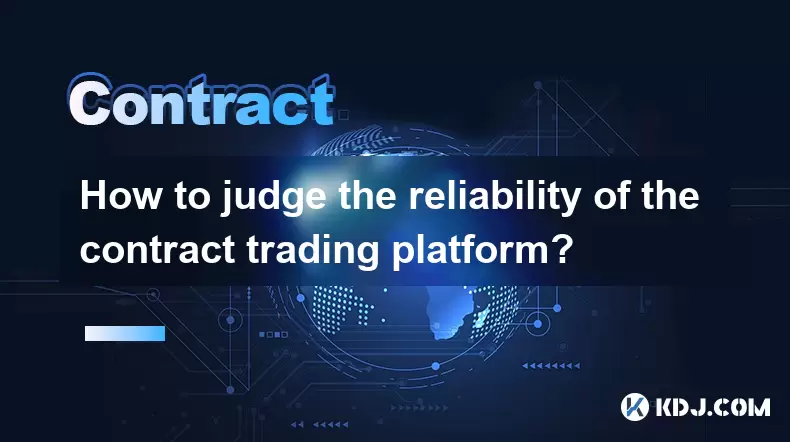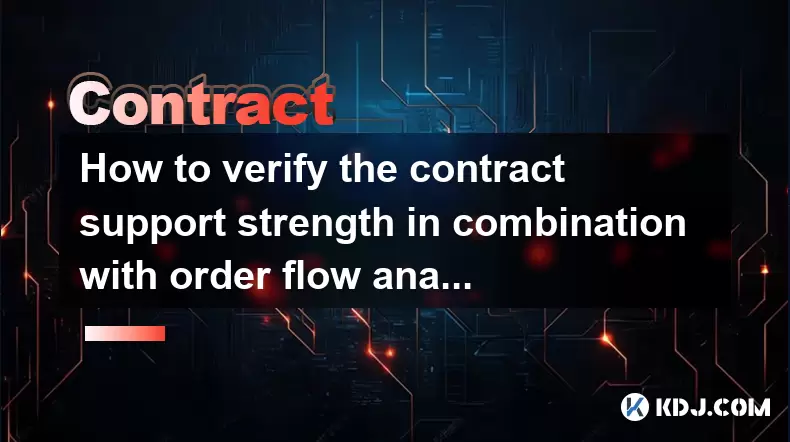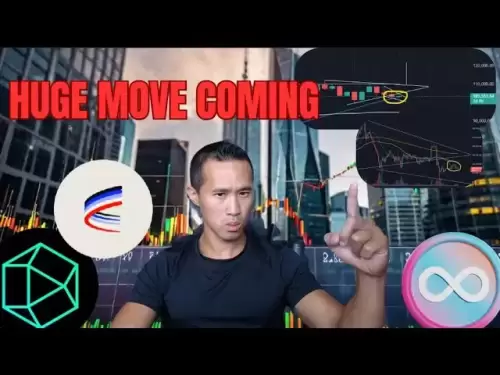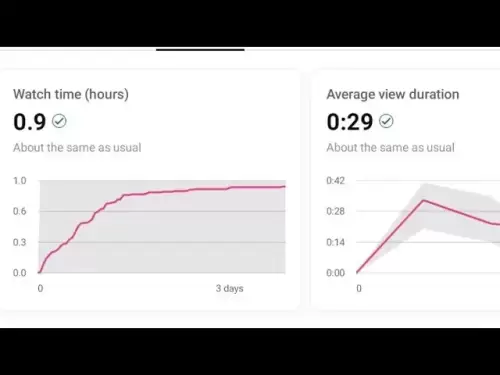-
 Bitcoin
Bitcoin $103,456.1111
0.49% -
 Ethereum
Ethereum $2,414.9631
0.02% -
 Tether USDt
Tether USDt $1.0006
0.05% -
 XRP
XRP $2.1083
0.24% -
 BNB
BNB $634.8760
-0.76% -
 Solana
Solana $139.8437
1.94% -
 USDC
USDC $0.9998
-0.01% -
 TRON
TRON $0.2737
0.97% -
 Dogecoin
Dogecoin $0.1602
0.20% -
 Cardano
Cardano $0.5737
1.08% -
 Hyperliquid
Hyperliquid $32.9779
-2.54% -
 Bitcoin Cash
Bitcoin Cash $474.8886
-1.80% -
 Sui
Sui $2.6272
-1.99% -
 Chainlink
Chainlink $12.4878
0.14% -
 UNUS SED LEO
UNUS SED LEO $8.9234
0.35% -
 Stellar
Stellar $0.2411
-0.18% -
 Avalanche
Avalanche $17.0274
-0.70% -
 Toncoin
Toncoin $2.8936
-1.11% -
 Shiba Inu
Shiba Inu $0.0...01112
-0.58% -
 Litecoin
Litecoin $82.6982
1.33% -
 Hedera
Hedera $0.1423
-0.05% -
 Monero
Monero $314.8455
3.26% -
 Ethena USDe
Ethena USDe $1.0006
0.01% -
 Polkadot
Polkadot $3.4043
1.14% -
 Dai
Dai $0.9999
0.01% -
 Bitget Token
Bitget Token $4.2848
-0.13% -
 Uniswap
Uniswap $6.8748
-5.45% -
 Pepe
Pepe $0.0...09661
0.52% -
 Pi
Pi $0.5359
1.19% -
 Aave
Aave $242.9168
-1.03%
How to judge the reliability of the contract trading platform?
A reliable contract trading platform ensures security, transparency, and liquidity to protect traders from risks like hacks, unfair liquidations, and market manipulation.
Jun 22, 2025 at 12:49 am

Understanding Contract Trading Platforms
Contract trading, particularly futures and perpetual contracts, has become a popular method for traders to speculate on cryptocurrency price movements without owning the underlying asset. With the rise in popularity, numerous platforms have emerged offering contract trading services. However, not all of these platforms are trustworthy or reliable. It is essential for traders to assess the reliability of a contract trading platform before depositing funds.
Reliability here refers to the platform’s ability to execute trades fairly, maintain security of funds, provide accurate data, and ensure transparency in operations.
Evaluating Security Measures
Security should be the top priority when assessing any contract trading platform. Given the number of high-profile hacks and exit scams in the crypto space, users must ensure that their chosen platform implements robust security protocols.
- Check if the platform uses cold storage solutions for user funds and how much of the total reserves are kept offline.
- Look into the history of past breaches — whether the platform has been hacked before and how it responded to such incidents.
- Verify two-factor authentication (2FA) availability, especially for login and withdrawal processes.
- Assess wallet insurance mechanisms like insurance funds or compensation policies in case of system failure or hack.
Additionally, check if the platform undergoes regular third-party audits and publishes reports related to smart contract security and exchange infrastructure.
Analyzing Liquidity and Market Depth
Liquidity plays a crucial role in contract trading. A reliable platform should offer sufficient liquidity to allow users to enter and exit positions without significant slippage.
- Review order books and depth charts to understand how deep the market is for major trading pairs.
- Observe bid-ask spreads — consistently wide spreads may indicate low liquidity or manipulation.
- Check trading volume across multiple sources like CoinGecko or CoinMarketCap to verify authenticity.
Platforms with low liquidity can lead to poor execution quality, especially during volatile market conditions.
Transparency and Fair Pricing Mechanisms
A reliable contract trading platform must provide transparent pricing, funding rate calculations, and liquidation procedures. Lack of clarity in these areas often leads to disputes between users and the platform.
- Examine funding rate formulas — they should be published and follow industry-standard methodologies.
- Review liquidation engines — look for clear explanations of how and when liquidations occur.
- Ensure mark prices are derived from credible spot exchanges to prevent unfair liquidations.
Some platforms manipulate mark prices to trigger liquidations prematurely. Always cross-check price feeds and funding rates with other platforms.
User Feedback and Regulatory Compliance
User reviews and community feedback can serve as valuable indicators of a platform’s reliability. Engaging with forums, social media groups, and review sites helps identify red flags early.
- Search for complaints about withdrawals delays or refusal — this is a major sign of potential insolvency or malicious intent.
- Investigate legal actions or regulatory scrutiny against the platform in jurisdictions where it operates.
- Check licensing status — whether the platform holds necessary licenses from financial authorities like FCA, CySEC, or MAS.
While regulation doesn’t guarantee absolute safety, it does add a layer of accountability and compliance oversight.
Frequently Asked Questions
Q: How do I know if a contract trading platform manipulates prices?
A: Look for inconsistencies in mark prices compared to major spot exchanges, frequent unfair liquidations, and lack of transparency in price calculation methods. You can also compare funding rates and liquidation logs across platforms.
Q: Are decentralized contract trading platforms more reliable than centralized ones?
A: Decentralized platforms offer greater transparency and eliminate counterparty risk due to smart contract-based settlement. However, they may lack advanced features and support compared to centralized options. The choice depends on your priorities regarding control versus convenience.
Q: What should I do if I suspect a platform is unreliable?
A: Immediately stop using the platform and withdraw your funds if possible. Report suspicious activity to relevant forums and consider alerting crypto watchdogs or consumer protection agencies.
Q: Is high leverage always a bad sign for a contract trading platform?
A: Not necessarily. High leverage itself isn’t harmful, but platforms offering extremely high leverage without proper risk controls may encourage reckless trading and increase liquidation risks. Always evaluate leverage offerings alongside risk management tools.
Disclaimer:info@kdj.com
The information provided is not trading advice. kdj.com does not assume any responsibility for any investments made based on the information provided in this article. Cryptocurrencies are highly volatile and it is highly recommended that you invest with caution after thorough research!
If you believe that the content used on this website infringes your copyright, please contact us immediately (info@kdj.com) and we will delete it promptly.
- Ruvi AI: The Audited Token Poised to Outshine Shiba Inu
- 2025-06-22 10:25:12
- Dypians, DeFi, and Sei Network: A Deep Dive into the Latest Trends
- 2025-06-22 10:25:12
- Hacken Security Breach Highlights Risks Across Ethereum and BSC
- 2025-06-22 08:25:12
- SHIB Price, Forecasts, Timelines: Will Shiba Inu Ever Reach the 'One-Cent Dream'?
- 2025-06-22 08:25:12
- Avalanche vs. Ruvi AI: Why Smart Money's on This Audited Token
- 2025-06-22 08:45:12
- Bitcoin Demand on Pause: What's Next for the Crypto King?
- 2025-06-22 08:45:12
Related knowledge

How to use the price slope to filter the false breakthrough signal of the contract?
Jun 20,2025 at 06:56pm
Understanding the Concept of Price Slope in Contract TradingIn contract trading, especially within cryptocurrency derivatives markets, price slope refers to the rate at which the price changes over a specific time period. It helps traders assess the strength and sustainability of a trend. A steep slope may indicate strong momentum, while a shallow slope...

How to determine the expected volatility of the contract through the volatility cone?
Jun 19,2025 at 12:28pm
Understanding the Basics of Volatility in Cryptocurrency ContractsIn the realm of cryptocurrency trading, volatility is a key metric that traders use to assess potential risk and reward. When dealing with futures contracts, understanding how volatile an asset might become over time is crucial for position sizing, risk management, and strategy developmen...

How to formulate a contract intraday trading plan in combination with the pivot point system?
Jun 21,2025 at 03:42pm
Understanding the Basics of Pivot Points in Cryptocurrency TradingPivot points are technical analysis tools used by traders to identify potential support and resistance levels. These levels are calculated using the previous day's high, low, and closing prices. In the context of cryptocurrency trading, where markets operate 24/7, pivot points help trader...

How to use the volume swing indicator to predict the contract volume-price divergence?
Jun 18,2025 at 11:42pm
Understanding the Volume Swing IndicatorThe volume swing indicator is a technical analysis tool used primarily in cryptocurrency trading to evaluate changes in volume over time. Unlike price-based indicators, this metric focuses solely on trading volume, which can provide early signals about potential market reversals or continuations. The key idea behi...

How to use the Gaussian channel to set the contract trend tracking stop loss?
Jun 18,2025 at 09:21pm
Understanding the Gaussian Channel in Cryptocurrency TradingThe Gaussian channel is a technical indicator used primarily in financial markets, including cryptocurrency trading, to identify trends and potential reversal points. It is based on statistical principles derived from the normal distribution, commonly known as the Gaussian distribution or bell ...

How to verify the contract support strength in combination with order flow analysis?
Jun 20,2025 at 12:28pm
Understanding Contract Support Strength in CryptocurrencyIn the realm of cryptocurrency trading, contract support strength refers to the resilience of a price level where buying interest is expected to overcome selling pressure. This concept becomes even more nuanced when analyzed alongside order flow, which provides insights into the dynamics of buy an...

How to use the price slope to filter the false breakthrough signal of the contract?
Jun 20,2025 at 06:56pm
Understanding the Concept of Price Slope in Contract TradingIn contract trading, especially within cryptocurrency derivatives markets, price slope refers to the rate at which the price changes over a specific time period. It helps traders assess the strength and sustainability of a trend. A steep slope may indicate strong momentum, while a shallow slope...

How to determine the expected volatility of the contract through the volatility cone?
Jun 19,2025 at 12:28pm
Understanding the Basics of Volatility in Cryptocurrency ContractsIn the realm of cryptocurrency trading, volatility is a key metric that traders use to assess potential risk and reward. When dealing with futures contracts, understanding how volatile an asset might become over time is crucial for position sizing, risk management, and strategy developmen...

How to formulate a contract intraday trading plan in combination with the pivot point system?
Jun 21,2025 at 03:42pm
Understanding the Basics of Pivot Points in Cryptocurrency TradingPivot points are technical analysis tools used by traders to identify potential support and resistance levels. These levels are calculated using the previous day's high, low, and closing prices. In the context of cryptocurrency trading, where markets operate 24/7, pivot points help trader...

How to use the volume swing indicator to predict the contract volume-price divergence?
Jun 18,2025 at 11:42pm
Understanding the Volume Swing IndicatorThe volume swing indicator is a technical analysis tool used primarily in cryptocurrency trading to evaluate changes in volume over time. Unlike price-based indicators, this metric focuses solely on trading volume, which can provide early signals about potential market reversals or continuations. The key idea behi...

How to use the Gaussian channel to set the contract trend tracking stop loss?
Jun 18,2025 at 09:21pm
Understanding the Gaussian Channel in Cryptocurrency TradingThe Gaussian channel is a technical indicator used primarily in financial markets, including cryptocurrency trading, to identify trends and potential reversal points. It is based on statistical principles derived from the normal distribution, commonly known as the Gaussian distribution or bell ...

How to verify the contract support strength in combination with order flow analysis?
Jun 20,2025 at 12:28pm
Understanding Contract Support Strength in CryptocurrencyIn the realm of cryptocurrency trading, contract support strength refers to the resilience of a price level where buying interest is expected to overcome selling pressure. This concept becomes even more nuanced when analyzed alongside order flow, which provides insights into the dynamics of buy an...
See all articles
























































































